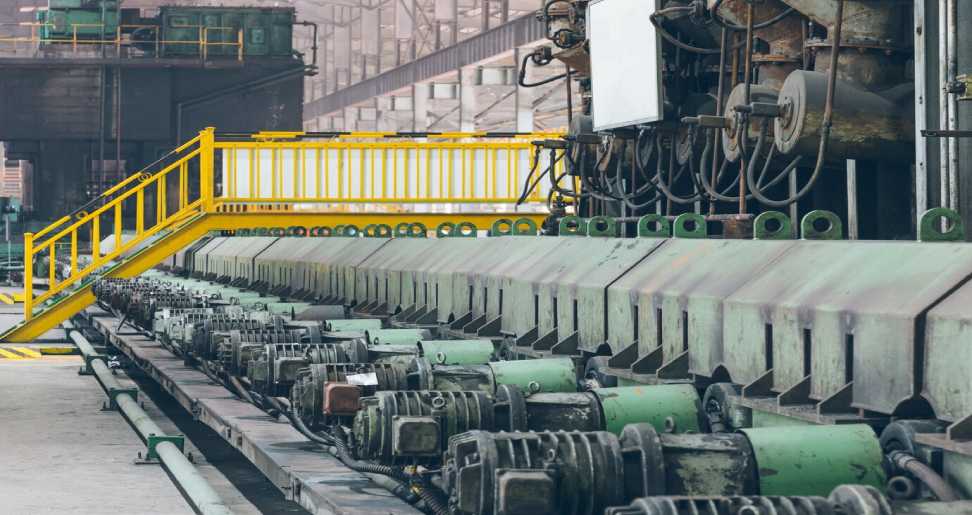In today’s fast-paced industrial world, mastering the art of mass production is crucial for manufacturers aiming to stay competitive. From automotive giants to tech innovators, those who excel in this realm can substantially reduce costs, enhance productivity, and deliver quality products at scale. This blog post will explore efficient strategies for mass production of parts, providing valuable insights for manufacturers keen on optimizing their operations.
You’ll discover actionable tips, real-world examples, and best practices that can revolutionize your production lines. Whether you’re an established player or a startup, these strategies will help you maximize efficiency and drive growth.
Understanding Mass Production
What is Mass Production?
Mass production refers to the large-scale manufacturing of standardized products. It involves the use of assembly lines, automation, and repetitive processes to produce items quickly and cost-effectively. This approach has revolutionized industries by enabling the production of high volumes of goods without compromising on quality.
Historical Context
The concept of mass production dates back to the early 20th century when Henry Ford introduced assembly line production for automobiles. This innovation drastically reduced manufacturing time and costs, setting the stage for modern production techniques.
Importance in Modern Industry
In today’s global market, mass production is essential for meeting consumer demands and maintaining competitive prices. Industries like automotive, electronics, and heavy equipment manufacturingrely heavily on efficient production processes to thrive.
Key Strategies for Efficient Mass Production
Streamlining the Supply Chain
An efficient supply chain is the backbone of successful mass production. By optimizing logistics, inventory management, and supplier relationships, manufacturers can ensure a smooth flow of materials and minimize delays.
- Supplier Relationships – Building strong partnerships with reliable suppliers can lead to better pricing, timely deliveries, and improved quality control. Regular communication and collaboration are key to maintaining these relationships.
- Inventory Management – Implementing just-in-time (JIT) inventory systems can reduce storage costs and minimize waste. This approach ensures that materials are available exactly when needed, enhancing production efficiency.
- Logistics Optimization – Efficient transportation and distribution systems are crucial for timely delivery of raw materials and finished products. Leveraging technology for route planning and real-time tracking can significantly improve logistics management.
Investing in Automation
Automation plays a pivotal role in modern mass production. By incorporating advanced technologies like robotics, AI, and IoT, manufacturers can enhance precision, speed, and consistency in their production lines.
- Robotic Process Automation (RPA) – RPA can handle repetitive tasks such as assembly, welding, and packaging, freeing up human workers for more complex and creative roles.
- Artificial Intelligence (AI) – AI-powered systems can analyze the vast amounts of data for optimizing the production schedules, and for predicting the maintenance needs, and improve quality control.
- Internet of Things (IoT) – IoT devices can monitor and control various aspects of the production process in real-time, enabling manufacturers to identify and address issues promptly.
Implementing Lean Manufacturing
Lean manufacturing focuses on minimizing waste and maximizing value. This approach emphasizes continuous improvement, employee involvement, and efficient resource usage.
- Value Stream Mapping (VSM) – VSM helps identify and eliminate non-value-added activities in the production process, leading to improved efficiency and reduced lead times.
- 5S Methodology – The 5S system (Sort, Set in order, Shine, Standardize, Sustain) organizes the workplace for optimal efficiency and safety. It promotes cleanliness, orderliness, and standardization, which are essential for smooth production operations.
- Kaizen – Kaizen, or continuous improvement, encourages employees at all levels to contribute ideas for enhancing processes and eliminating waste. Regular Kaizen events can lead to significant improvements over time.
Enhancing Quality Control
Maintaining high-quality standards is critical in mass production. Implementing rigorous quality control measures ensures that products meet specifications and customer expectations.
- Statistical Process Control (SPC) – SPC uses statistical methods to monitor and control production processes. By analyzing data, manufacturers can detect variations and implement corrective actions before defects occur.
- Six Sigma – Six Sigma methodologies aim to reduce defects and variations in processes. Through DMAIC (Define, Measure, Analyze, Improve, Control) and DMADV (Define, Measure, Analyze, Design, Verify) frameworks, manufacturers can achieve near-perfect quality levels.
- Total Quality Management (TQM) – TQM involves a company-wide commitment to quality. It encourages continuous improvement and customer satisfaction as central goals of the organization.
Workforce Training and Development
A skilled and knowledgeable workforce is vital for efficient mass production. Investing in employee training and development can lead to higher productivity, better problem-solving, and innovative solutions.
- Technical Training – Providing regular technical training ensures that employees stay updated with the latest production techniques and equipment. This reduces errors and enhances operational efficiency.
- Cross-Training – Cross-training employees in multiple roles increases flexibility and allows for smoother operations during absences or peak production periods.
- Leadership Development – Developing leadership skills within the workforce promotes a culture of continuous improvement and empowers employees to take initiative in driving efficiency.
Conclusion
Efficiency in mass production is no longer just a competitive advantage; it’s a necessity. By adopting the strategies discussed in this blog post, manufacturers can enhance their production processes, reduce costs, and deliver superior products to market faster.
Whether you’re looking to streamline your supply chain, invest in automation, implement lean manufacturing, enhance quality control, or develop your workforce, these strategies provide a roadmap to success.
Remember, continuous improvement and adaptation are key to staying ahead in the dynamic world of manufacturing. Start incorporating these strategies today and witness the transformation in your production efficiency.
Have A Look :-
- Apple Watch Ultra Review: Overview
- What Is Hurawatch? Is It Safe To Use?
- Express Yourself: Adding Music to Your Facebook Profile

